Cambodia is the fourth and final country in our three-month jaunt around southeast Asia. Two months in advance of our arrival we applied for Cambodian e-visas. In response we received an email informing us that we applied too soon and our application was being placed in the “processing pile,” universal speak for “black hole”.
About ten days prior to our scheduled arrival we sent a short reply to the previous email asking for a status update. Hours later we had our Cambodian e-visas. I seriously doubt we would have received them otherwise.
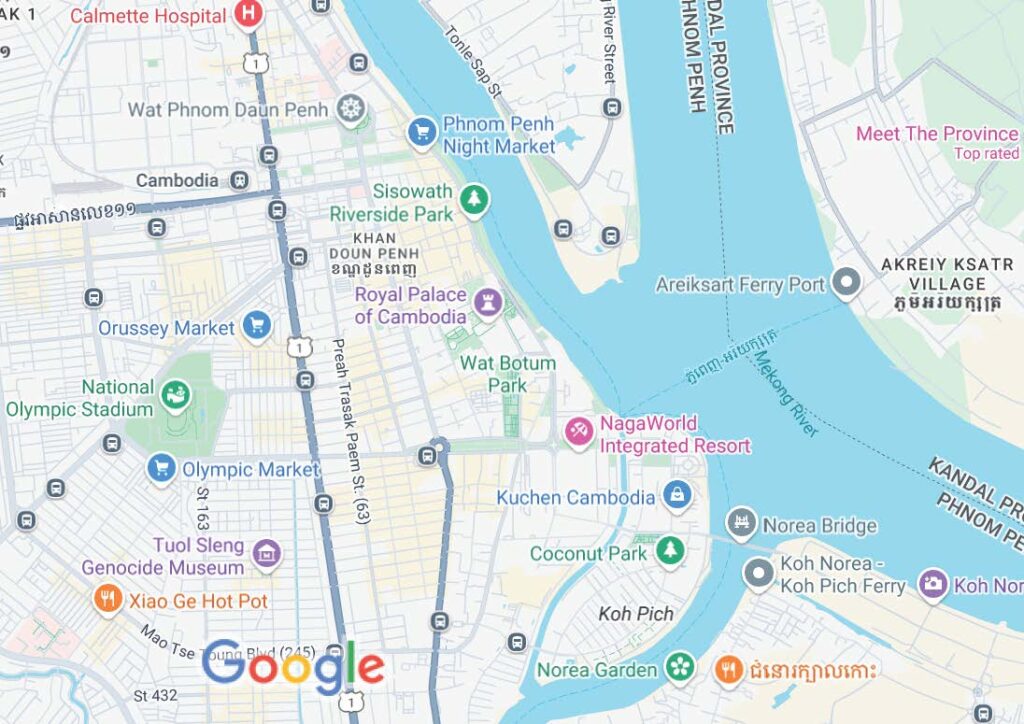
In addition to obtaining a visa, incoming travelers must complete an e-arrival form, either online or through Cambodia’s e-arrival app, the result of which is a QR code that you need to enter the country.
Immigration is a breeze if you have everything in order: (1) passport; (2) the boarding pass from your incoming flight; (3) your e-visa; and (4) an e-arrival QR code. Make sure you have your QR code ready to show. This extra bit of information is easy to overlook on the spot. You don’t want to be that person holding up the line because you either did not obtain a QR code or do not remember how to access it on your phone.
Admittedly we completely forgot about our QR codes, remembering them only when the couple in front of us in line was denied entry. In the moment they panicked and forgot how to access their QR codes. (They made it through immigration about 15 minutes later after realizing their QR codes were stored on an iPad in a backpack rather than on their phones.)
Our plane from Nha Trang (via Hồ Chi Minh City) touched down in Phnom Penh at 4:45 PM. Less than 30 minutes later we were through immigration, customs, and baggage claim, walking out into 95° F heat (35° C) and a light rain.
A Grab pick up station is located just outside the airport terminal. During the two minute walk from the terminal to the station, half a dozen or more tuk-tuk drivers offered us rides into town. Instead of explaining that we would rather ride in an air-conditioned car, it was easier to tell the tuk-tuk drivers that we did not have any cash. That they understood perfectly well.
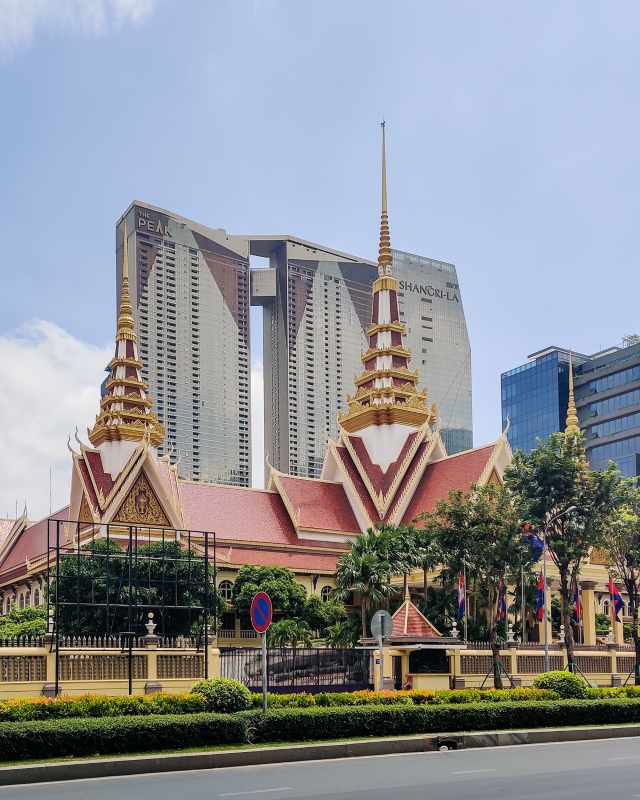
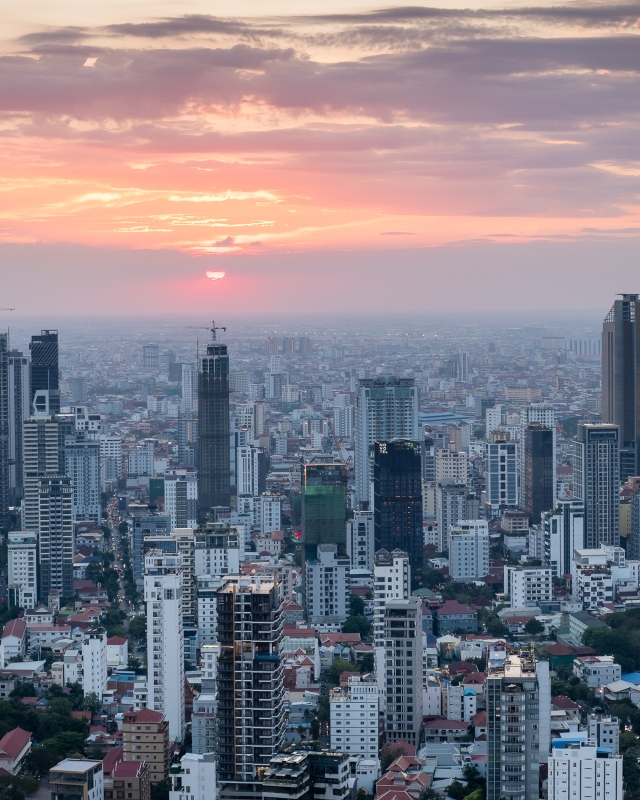
Our Grab car picked us up at about 5:15 PM, right at the height of rush hour. The 8 mile (13 kilometer) ride to The Peak, our apartment for the week, took over 90 minutes. Seriously, the traffic was so bad we only managed five miles per hour.
And for whatever reason our driver was not fond of air conditioning. Stephanie repeatedly rolled down her window in order to get some fresh air.
The Peak is a very nice and large apartment complex (two towers, 55 floors each) with swimming pools, gyms, a library, meeting rooms, charcoal grills and tables, a playground, and security guards. Cafés, restaurants, and convenience stores are on the ground floor.
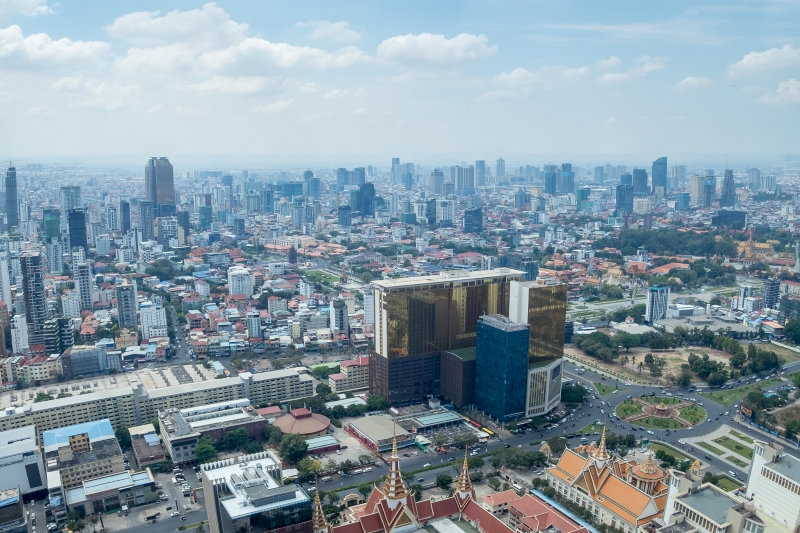
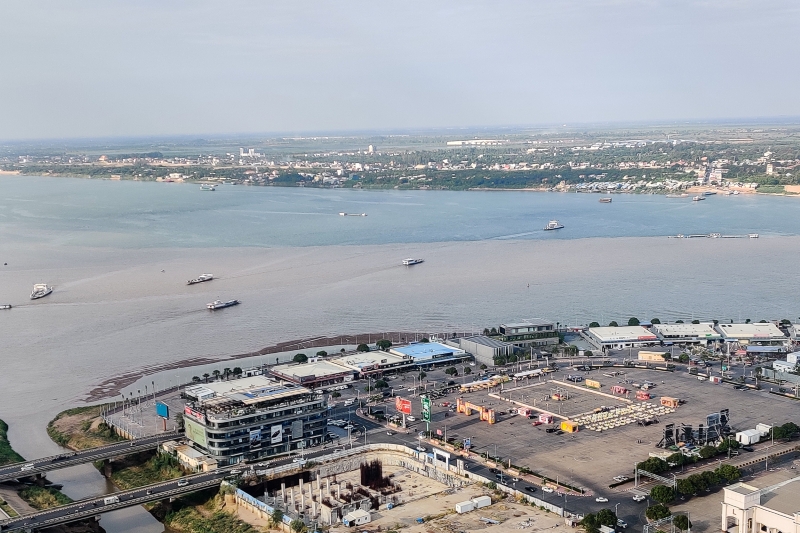
Our apartment, on the 39th floor, is fine. It’s a large one bedroom, one bathroom with very sparse furnishings. We literally have exactly two of everything (plates, bowls, glasses, mugs, forks, spoons, pots, bathroom towels … but only one knife and one trashcan). The furniture is above average for comfort in southeast Asia, but still not great.
After checking into and dropping our bags, we headed outside for a short walk around the neighborhood. One glaring fact became immediately obvious. We are in Chinatown. Everything within several blocks of us is by Chinese, for Chinese, and in Chinese. And the Chinese are not here to accommodate other foreign tourists. They don’t subtitle in English. Or in Khmer (the official language of Cambodia) for that matter.
As a bonus, if the VPN on our phones is off for any length of time in this neighborhood, we get inundated with scam texts in Chinese. Better yet, you can wear your pajamas all day long and not be out of place in Chinatown.
Riding in tuk-tuk for about 1 mile at the cost of $1 gets us into Cambodia.
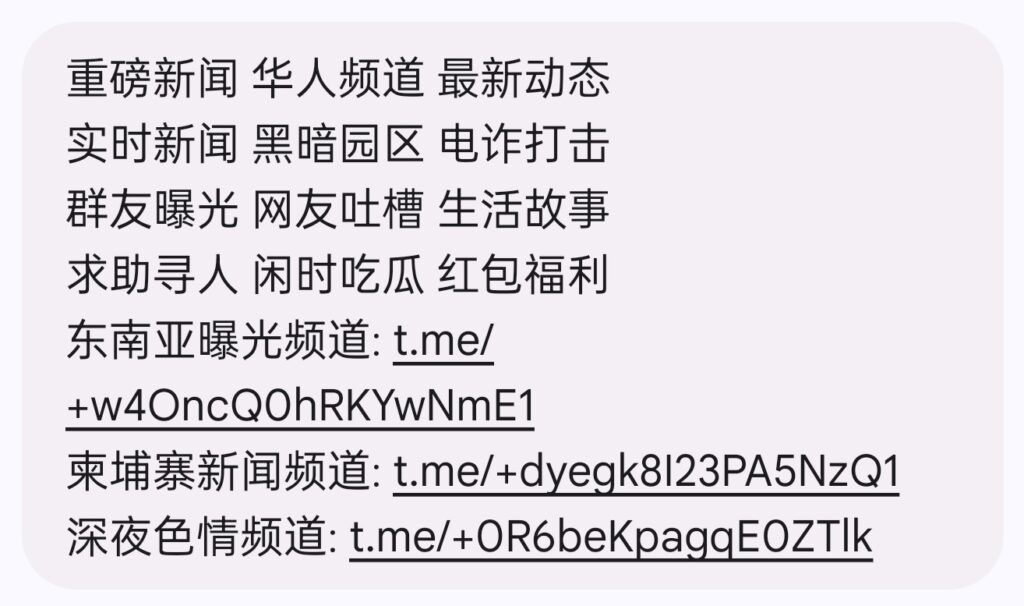
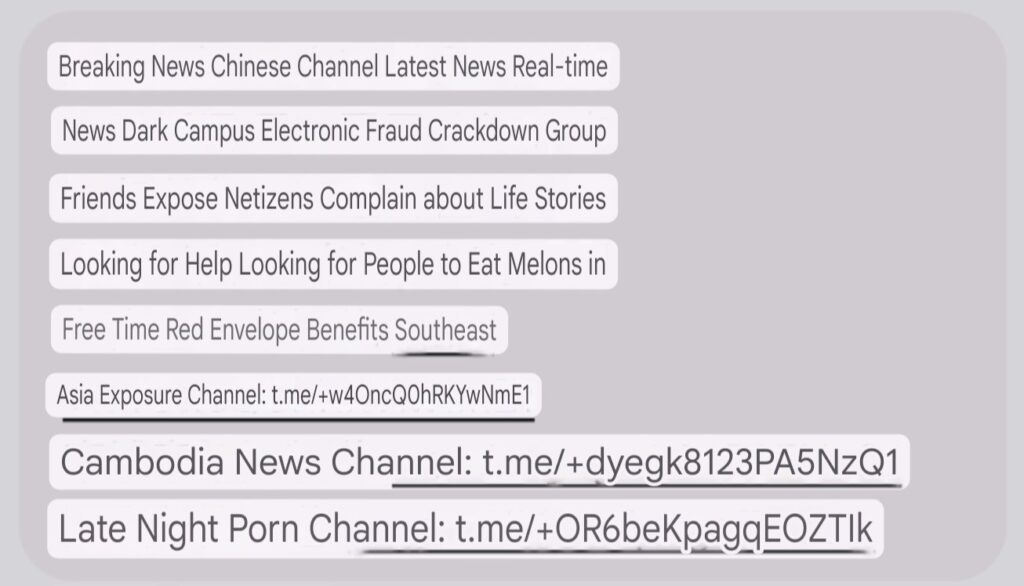
Stephanie received a verbal warning for poor performance in her position as accommodation finder for Phnom Penh. Ideally we would have stayed west or north of the Royal Palace. Live and learn.
Enough complaining. Phnom Penh is a much larger and more interesting city than we expected. Unfortunately, it is burdened with sweltering heat and high humidity. It is mid-March and the afternoon temperatures are already above 95° F (35° C) with humidity over 70% most days.
Like the rest of southeast Asia, the sidewalks are worthless for anything except scooter parking and food stands. After several months in the region, we are so used to walking in the street that we pay scant attention to the sidewalks anyway.
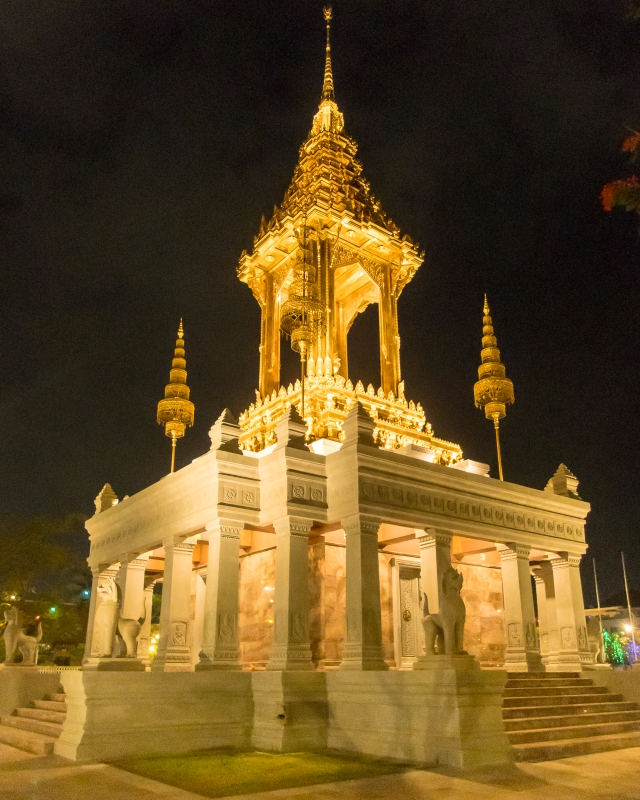
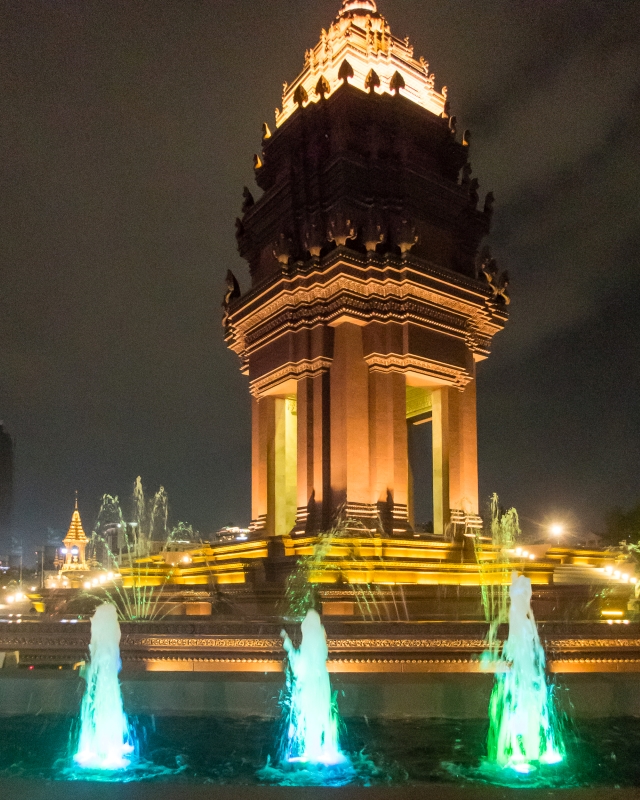
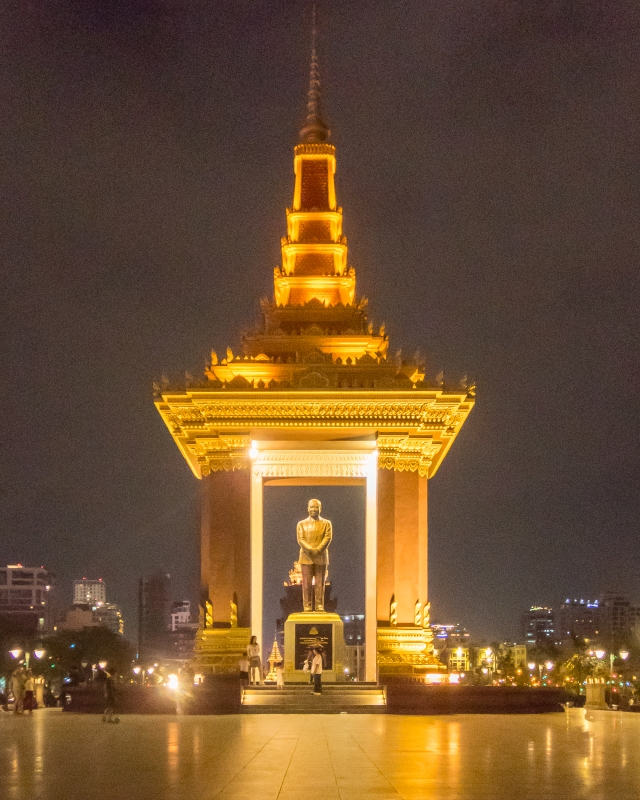
Before arriving in Cambodia we learned that the United States dollar ($ or USD) is frequently accepted in addition to the Cambodian riel (៛ or KHR). After arriving, we quickly realized that USD is the default currency. It is vastly preferred over KHR. Every business that might see a tourist sets its prices in USD. Usually, but not always, you’ll see prices in KHR as well.
A consistent, stable exchange rate of 4,000៛ to $1 is used by most businesses, so it is pretty easy to translate currencies if one only or other is quoted. You can even pay with a mix of both. The only downside to paying with USD is getting change in KHR. Every business takes USD (good clean bills only, no tears, stains, or other markings), but none gives USD as change.
If you are an American going to Cambodia, heed this advice: take a large quantity of $1 and $5 bills, along with several $10 and $20 bills. You will be glad you did. If you buy something with USD, your change will consist of well-used, completely trashed and beat up, small denomination KHR bills. No one wants tons of crappy small denomination bills. As the foreigner, you get them.
As an example, I paid $2.50 for two Krispy Kreme donuts (yes, Krispy Kreme!) using a $5 bill. The change was, of course, $2.50. So I got back 10,000៛: two 1,000៛ bills, five 100៛ bills, and fifteen 500៛ bills. That’s 22 paper bills worth $2.50.
And then there was the time I used a $5 bill to pay $4.80 at a grocery store. I received 800៛ in change – eight 100៛ bills. That’s 8 paper bills worth $0.20. Okay, these are extreme examples, but not that uncommon.
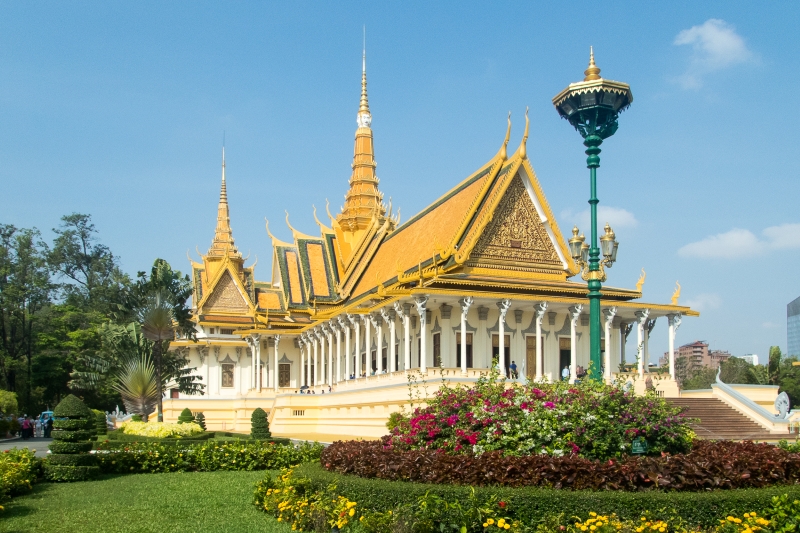
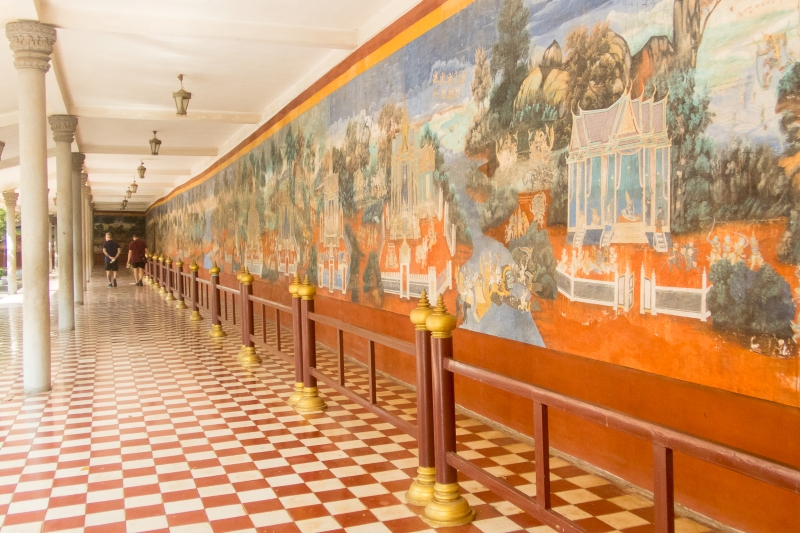
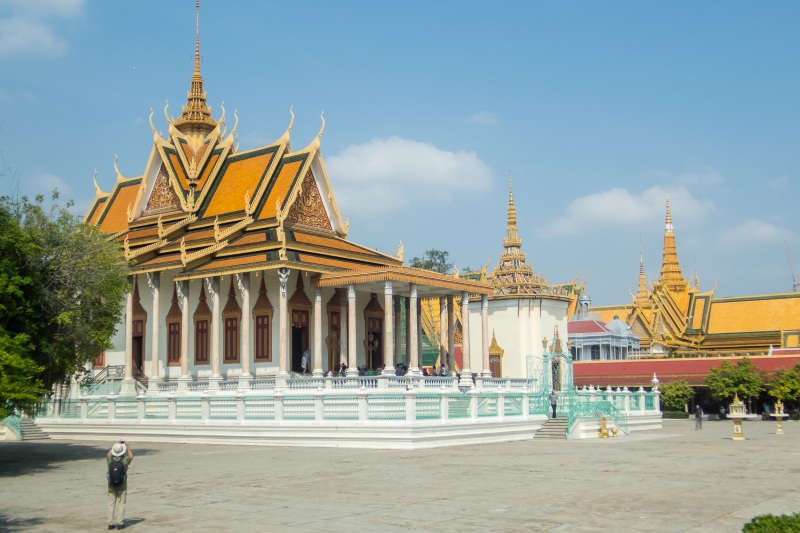
After a few days you will learn to mix and match currencies as well as the locals. Getting rid of the massive quantity of KHR bills you receive as change is a priority.
If you plan on paying entirely with KHR, avoid showing any USD. Several times folks saw USD in my wallet and insisted I pay with USD instead of dozens of crappy KHR bills. I held firm and paid with KHR, but they weren’t happy about it.
Interestingly, many ATMs in Phnom Penh only dispense $100 bills, which is surprisingly problematic because no one wants them. Using a $100 bill to pay for a $7 dollar meal results in a nightmare amount of change in KHR. If you get stuck with a $100 bill from the ATM, take it to Wing Bank where you can trade it in for useable $5 and $10 bills.
For our first outing in Phnom Penh, we went to the Royal Palace (Preah Barom Reacheaveang Chaktomuk Serey Mongkol). The name “Royal Palace” naturally evokes a certain level of awesomeness. Unfortunately that is not quite the situation here.
Tickets for foreigners cost $10 (cash only), making this one of the pricier places we’ve visited on this entire trip. For that we got to look through a doorway into the large Throne Hall (Preah Tineang Tevea Vinichhay) and walk through the Temple of the Emerald Buddha (Wat Preah Keo Morakot). Both are somewhat of a letdown compared to other places we have visited in Thailand and Vietnam.
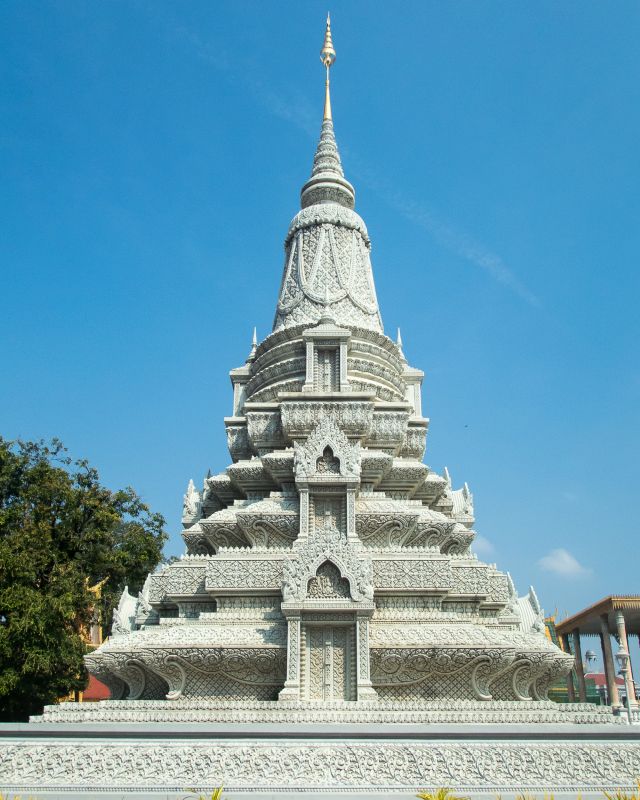
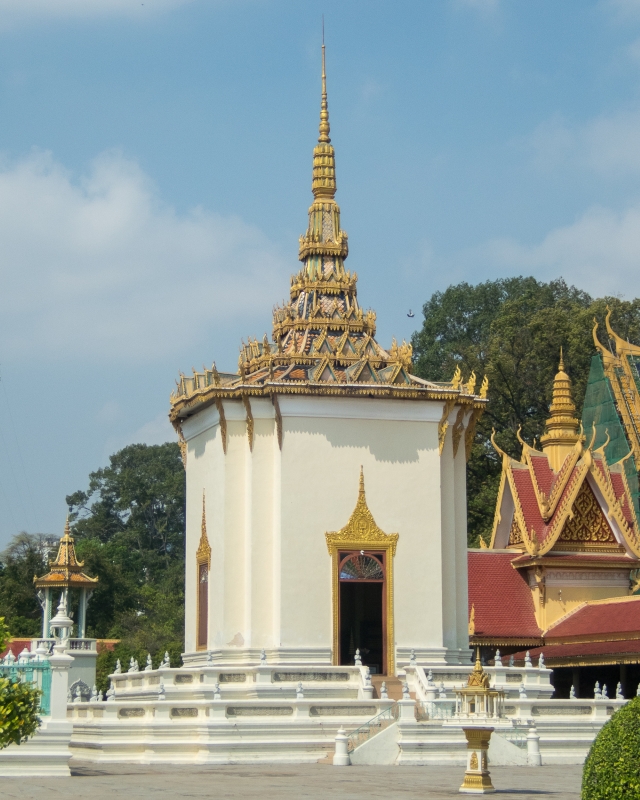
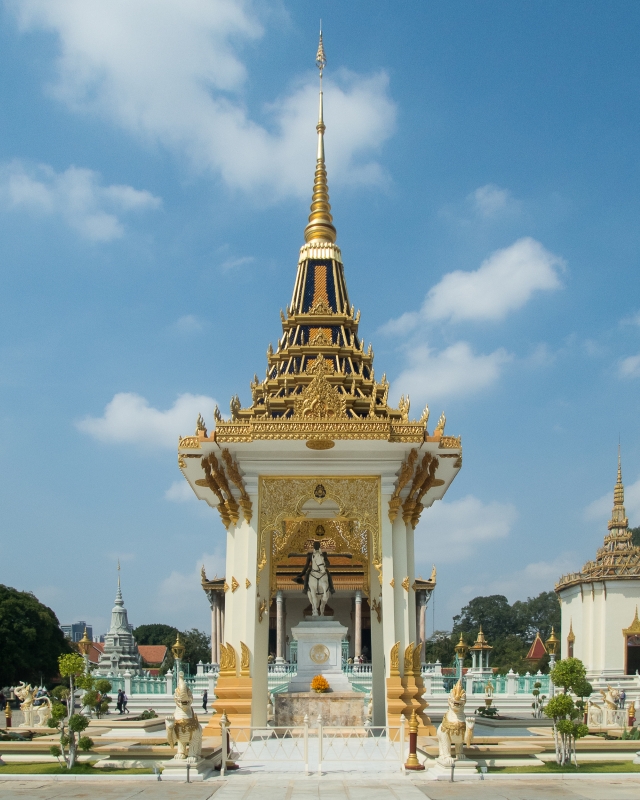
Sure there are a few other things to see in the Royal Palace, but not much. We could not enter many buildings, and the few we did were really hot. We skipped the gardens because of the scorching sun.
As you might expect, the actual residence of the King of Cambodia (Preah Moha Prasat Khemarin) is not open to the public.
So we paid $10 each to experience heat and humidity among dozens of school groups and tour groups for about 45 minutes. On the way out everyone is given a complimentary bottle of water. Great, thanks. I hate to say this, because I really like Phnom Penh, but the sections of the “Royal Palace” open to the public are fairly unimpressive.
At least we have more to see here.
Garrett and Stephanie
If you have not already done so, read our other post about Phnom Penh:
Phnom Penh, Cambodia (March, 2025, Part II). The Killing Fields; walking along Tonle Sap River; our final beer tasting in Southeast Asia.
For additional posts about Cambodia, or elsewhere in the world, check out our Travel Blog. It contains collected links to all of our travel posts.
Want to subscribe (or unsubscribe) for email notification of new blog posts? It is only two to three emails a month. Send your name and email address to slowtravelchronicles@gmail.com, and note subscribe (or unsubscribe) in the subject line. All email addresses will be kept confidential and not sold to any third-party. You won’t get any marketing junk or sales pitches from us.
